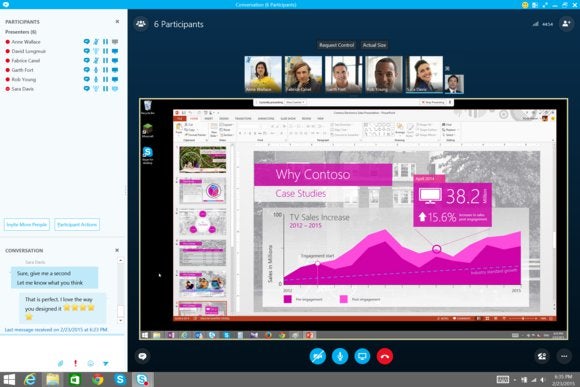

- SKYPE SERVER 2015 STEP BY STEP INSTALL
- SKYPE SERVER 2015 STEP BY STEP UPDATE
- SKYPE SERVER 2015 STEP BY STEP SERIES
The UCSAllowed should have the value of True and that means that integration is enabled in the current environment, as depicted in the image below we can validate that feature is not enabled.Īnother easy place to spot if the integration is in place or not, is using Skype for Business client. If you are transitioning from a previous version of Skype for Business (Lync Server), the Unified Contact Store may not be configured, and in order to check the current status we can use the Get-CSUserServicePolicy cmdlet in Skype for Business Server Management Shell, as shown in Figure 01.

If you are following our article series, you should be fine with integration by now. If you are installing Skype for Business for the first time in your organization, then Unified Contact Store will be enabled by default, however you still need the basic requirements which are having the user hosted on an Exchange Server 2013 or higher, and the integration between Exchange Server and Skype for Business must be in place. In previous versions of the Skype for Business Server (this product had several names, such as Live Communications Server (LCS), OCS which stands for Office Communications Server, and the last couple of releases were Lync Server) the contact information was stored inside of the product on its own database that resides on the SQL, however we can take advantage of Unified Contact Store (UCS) and store all contact information on the Exchange Server. In this article we are going to cover the Unified Contact Store (UCS) feature which allows all contacts to be stored in Exchange instead of the Skype for Business Server. In the previous article, we worked on the high resolution photos among Unified Communications products. Integrating Exchange Server 2013 and Skype for Business Server 2015 (Part 5).Integrating Exchange Server 2013 and Skype for Business Server 2015 (Part 4).Integrating Exchange Server 2013 and Skype for Business Server 2015 (Part 3).Integrating Exchange Server 2013 and Skype for Business Server 2015 (Part 2).Integrating Exchange Server 2013 and Skype for Business Server 2015 (Part 1).
SKYPE SERVER 2015 STEP BY STEP SERIES
If you would like to read the other parts of this article series please go to:
SKYPE SERVER 2015 STEP BY STEP UPDATE
This makes sure the SQL Express server that supports TLS 1.2 will be used.If you would like to be notified of when Anderson Patricio releases the next part in this article series please sign up to our Real Time Article Update newsletter.

SKYPE SERVER 2015 STEP BY STEP INSTALL
To fix this issue, you have to select the Connect to the internet to check for updates option to install the latest cumulative updates before the installation of Skype for Business Server 2015. After that, update SQL Server to the version that supports TLS 1.2, and then disable TLS 1.0 and TLS 1.1 again after SQL Server is updated. You have to enable TLS 1.0 and TLS 1.1 on the local computer uninstall Microsoft SQL Server 2014 (64-bit) through Programs and Features in Control Panel, and then rerun step 1 - Install Local Configuration Store and step 2 - Setup or Remove Skype for Business Server Components. This issue occurs because the setup installs a version of SQL Express that does not support TLS 1.2. This issue occurs when you enable the TLS 1.2 and disable the TLS 1.0/1.1 on the operating system. In addition, an Event ID 26011 could be logged in the Event Viewer. For example, SQL Server 2012 uses this path: C:\Program Files\Microsoft SQL Server\MSSQL11.RtcLocal\MSSQL\Log. Log files are in the folder C:\Program Files\Microsoft SQL Server\MSSQL*.RtcLocal\MSSQL\Log, where the * represents your SQL Server version number. Prerequisite installation failed: Prerequisite installation failed: SqlInstanceRtcLocal For more information, check your SQL Server log files. When you install the Local Configuration Store by using the Microsoft Skype for Business Server 2015 deployment wizard, the installation fails, and you receive the following error message:


 0 kommentar(er)
0 kommentar(er)
